Tapati Festival
The reason we came to Easter Island (please see the post on Easter Island) in February (summer) is that the Rapa Nui sponsor an annual festival, the Tapati  (which means Rapa Nui Week), held since 1975 around the beginning of the month to celebrate Rapa Nui culture. It is their way of maintaining and promoting their culture, honoring their ancestors, reliving and preserving their cultural identity.
(which means Rapa Nui Week), held since 1975 around the beginning of the month to celebrate Rapa Nui culture. It is their way of maintaining and promoting their culture, honoring their ancestors, reliving and preserving their cultural identity.
Some more cynical people say the purpose of the festival to bring tourists to the island. It is true that there were about 2000-3000 people at the festival, 50% local and 50% tourists. That’s why we came this time of year. The locals all come out, many to see their kids dancing and performing. But as explained to us, most importantly the festival is a way to teach their children about their identity and culture.
Many of the traditions of the island were being lost. In 1986, one of the teachers worked to bring back the traditions via the festival. And these same traditions are now integrated into the schools with the children learning the dances and the sports in PE.
Welcome Letter
Perhaps the Pedro Pablo Edmunds’s welcome letter to the festival explains it best:
 “Like many other ancient civilizations, the Rapa Nui culture has a great admiration for the body and its beautification. In this context this tradition emerges, seeking to enhance beauty through tattoos and painting. It communicates and establishes status, rank, rights and even moods.
“Like many other ancient civilizations, the Rapa Nui culture has a great admiration for the body and its beautification. In this context this tradition emerges, seeking to enhance beauty through tattoos and painting. It communicates and establishes status, rank, rights and even moods.
This traditional art uses different colors, produced from the diversity of nature. For example, the Ki’ea or “colored earth”, white, yellow and black, or obtained from charred plants and specific places on the island.
The color red was, and remains, one of the favorites, which is demonstrated in that much of the symbolism of the Rapa Nui culture bears that color. Black and white are also key to the expression of the enjoyment of the body and its beauty.
During the Tapati Rapa Nui festival, it is tradition that exhibits of this art are exceptional displays demonstrating great creativity in the generation of allegories. Its excellence is admirable, and, because of this, the competition is challenging. Artists and their models exhibit their art accompanied by body movements and dance, along with small reviews that explaining the origin of its creation.”
Red vs. White
During the Tapati celebration, the town is divided in two, each representing a clan. The candidate for queen on the red team was Tiare Faundez Pakarati and her campanion and Petero Vvaka Teao and the candidate for queen on the white team was Tahira Nahoe Chaura and her companion Cristopher Araki Rapu. This evokes the rivalries of the clans back during the time of the Birdman. They must compete in the ancient races of the island. Each clan chooses a queen to represent and “lead” them during the competitions and the winner will have the right to the title of “Queen of the Island” for that year. It’s not a beauty contest, but rather a peaceful competition between the two clans that takes place day and night for two weeks. They compete in both physical and artistic competition including dancing, singing, swimming, canoeing, and horse racing. The clan with the most points at the end wins the crown. The candidates for queen are between 18-26 years old. The entire family works for a year helping them make their very elaborate dresses.
One of our guides, Lili Pate, was the Tapati queen in 2012. We saw her picture on the old poster. Lilly told us that it was hard work just getting ready to be a candidate for queen. She told us that being a candidate was harder than being a queen! But once she won, she traveled to Europe and Australia representing the island. She would sing and dance and meet with local mayors.
The Theme of the 2017 Tapati Festival
The theme of the Tapati is always changing but it is always chosen to remind everyone of the past history of the island. The competition takes place all over the island, but there is a main stage set up for the occasion, in the Vare Vare. Local artists compete to design the mural that makes up the background of the stage. This year’s mural, which was over 19.5 feet high, was of paintings of their ancestors with a theme of “Tribute to the Elders of Today and Yesterday,” the matriarchs, patriarchs of the original community. The inspiration for this came from the traditional Council of Elders Te Mau Hatu o te Rapa Nui.
Council of Elders
What is the Council of Elders Te Mau Hatu o te Rapa Nui? It is a community organization formed in the 1970s to represent the Rapa Nui people as they dealt with the Chilean government. One of their major achievements was the recognition of their rights as the true heirs of their land and their cultural heritage. It also recalled the 12 chiefs of Rapa Nui families who survived the slave raids from Peru in the 1860s and who later signed the Agreement of Wills in 1888 with the Chilean representative, Policarpo Toro, delivering sovereignty of Rapa Nui Island to Chile. This year the festival coincided with the 50th anniversary of when the Rapa Nui obtained Chilean citizenship. (For more on this history, please see the post on Easter Island and the Moai).
Opening Ceremonies
We were picked up at 930 pm. Yes, 930 at night. The opening night ceremonies began at 10. As we headed into the festivity area, we were visually assaulted by the sea, the sunset, the Moai, the crowds, the lights.
The stage was brightly lit and there was a video screen so everyone could see what was happening. The crowd was large. There was a seating section that looked packed and a section for standing room only. Luckily we had seats. We settled in and waited for them to start.
This whole evening (night) was about choreographed dancing, singing, music and costumes for children, youth and adults. The first part of the competition was for costumes. The white team went first and the candidates for queen and birdman wore costumes made from the banana plant. They each described in detail what each part of the costume was made of. Then the skirt was removed and paraded so the audience could see it. And the man and woman paraded around in their thongs.
When the white team finished, the second team, the red team, came out and described their costumes and paraded around. And the routine began again. When they finished, the next competition began, this time for costumes made of rooster feathers.
Tahira and Cristoher dance
Tiare and Petero dance
The dancing finally begins
And still we waited and watched for the dancing to begin. The teams would be judged on choreography and music. Finally, the white team came out, slowly, one by one, in long rows and when they were all on the stage, they began their dance. The stage was packed with dancers, maybe 100 of them, both girls and boys, although there were more girls than boys. All they were wearing were feathers. Feather skirts. Feather bras. Feathers in their hair. These were teenagers and younger and the boys looked a little bit embarrassed.
And when they finished, the adults came out, row by row.
The performers all moved in unison, looking like they were floating as they shook their hips. The white team performed four dances and the crowd went wild. It was then 12:30 in the morning and time for the red team. Our guide, Nune Hucke’s daughter was dancing in the red team so we waited and watched.
And the sky was full of drones flashing their red and blue lights.
There was a long table, about half-way back from the stage, with the judges who wore crowns made of leaves or flowers. They rated the contestants on a scale of 1-10, holding up signs like at the Olympics or Dancing with the Stars.
Dancing needs Music
And of course in order to dance, you need music. There was a band with drums  banging and ukuleles strumming. When we finally got back to our rooms in the early hours of the morning, we could still hear them.
banging and ukuleles strumming. When we finally got back to our rooms in the early hours of the morning, we could still hear them.
Riu or Songs
Riu, meaning song, was also part of the contest. The groups sang different songs, some sentimental, some erotic, some expressions of gratitude, affection or respect for their ancestors. We, of course, didn’t understand any of it, but just enjoyed the music and the sounds.
Kiki or String Stories
The next competition was the Kiki or story telling with strings. Each girl came out in a skimpy feathered costume which was based on the traditional ancestral costume. They used their hands to create a design with string, reminiscent of cats-cradle. And with that they would chant a legend, called Pata’uta’u, to go along with the string design. Each combination of verses chanted and the string designs has been preserved since ancient times.
Each team had about five girls competing. At midnight it was not over yet. While our guide, Nune Hucke (who is 9th generation Rapa Nui), tried to give us a synopsis of the legend, after a while the show became a bit repetitive since we could not understand the chants.
We left before the evening’s activities were over and found out the next morning that the white team won the evening.
Handicraft competitions
The competitions also include tests of the knowledge of the Rapa Nui in the art of  carving, handicrafts and agriculture. We didn’t see the agriculture ones as they happened in the second week. But we did see lots of the carving and handicrafts. These all took place in a tented area across from the main stage.
carving, handicrafts and agriculture. We didn’t see the agriculture ones as they happened in the second week. But we did see lots of the carving and handicrafts. These all took place in a tented area across from the main stage.
Making necklaces and crowns
We watched the women making their necklaces and flower crowns. The teams sat side by side, young and elderly, families and friends of the main queen candidate, who was also there competing. The welcome necklaces were made of Polynesian flowers such as tipanie (plumeria) or tiare (gardenia) which were beautiful but mostly in the competitive colors of white and red. The farewell necklaces were made of little shells (pipi). While the necklaces and crowns were all traditional designs, they were using modern techniques like glue guns.
Carving
The carving was also done by both men and women, using the century old traditions that have been passed down from parent to child, from generation to generation. Some were carving wood and others were carving stone. The carvings were replicas of the Moai, replicas of the petroglyphs we saw at Orongo, reimiro (a pectoral ornament in the form of a half moon), the mangai (Rapa Nui hook), the rongo rongo tables and more. (Note: for more of an explanation of these symbols, please see my post on Easter Island – Moai). The main objective of this competition was to show three things – mastery of the technique, speed and detail perfection.
Tingi Tingi Mahute
What is mahute? It is a plant brought to Rapa Nui from Polynesia. The bark of the mahute plant (mulberry) has been used for centuries by the Rapa Nui ancestors to make linen, ornaments and clothes. This therefore, has become one of the competitions, usually between women, although we also saw some men doing it. They flatten, stretch and shape the bark by tapping it (tingi tingi) with a wooden stick on a round stone (maea poro) until it becomes more like a piece of cloth. As you can imagine, it takes a lot of tingi tingi (tapping)! The winning piece is the one that is the largest, finest fabric.
Triathlon – Taua Rapa Nui
There was also a triathlon, considered one of the most impressive and hardest of the competitions. We only saw one-third of it. It started at the Rano Raraku crater (see the Easter Island – Moai blog) with the Pora, followed by the Aka Venga and the Vaka Ama.
Pora
The Pora is the first part of the triathlon and involves paddling a reed boat across the lake in the Rano Raraku crater. The competitors are dressed in traditional costumes and are covered in body paint.
Aka Venga
We got to see the some of the runners in the Aka Venga, the second part of the triathlon. The contestants run around the lake carrying two very large, very heavy  bunches of bananas hanging from a stick on their shoulders. The banana bunches can weight about 20 pounds each. Some of the participants then came down to the flat parts near the stage, where we were hanging out. I tried to hold the bananas – heavy!
bunches of bananas hanging from a stick on their shoulders. The banana bunches can weight about 20 pounds each. Some of the participants then came down to the flat parts near the stage, where we were hanging out. I tried to hold the bananas – heavy!
We walked around the grassy area. People were milling around. The competitors were all there, posing for pictures and just being friendly.
As you can see from the photos, the men wore very little. Basically they only wore a codpiece (from the Middle English work cod, meaning scrotum), that is, a small piece of cloth covering their private parts.
Vaka Ama
In the last part of the triathlon the participates swim across the lake using a small reed raft as a board.
Koro Haka Opo
On another night, we were again picked up very late and taken to another area set up for the festival. There were people sitting on blankets, eating, drinking, and enjoying the festivities. This was the Koro Haka Opo which was a competition between the two choirs from the two groups. They each had to interpret songs with singing and dancing, but this time it was just men (wearing very little) doing what looked like battle reenactments. It seemed to go on for hours and in fact it does as they keep going until one group makes a mistake and thus loses.\
Haka Pei
This was the last competition we got to see. And what a competition! This is considered the pinnacle of the festivities. About 12 young men, wearing only a breech cloth and body paint, speed down a big hill on a sled made of two banana (plantain) tree trunks which have been strung together with twine.
The men are on their backs going downhill feet first. Some of the were on double sleds. The hill is a very steep, 400 feet long slope at a 45-degree angle on the Pu’I hill. The speed of the competitors could be as fast as 50 miles/hour. It takes each man about 10 seconds! The winner if the man who can go the farthest distance from the starting point at the top of the hill as many of them get stuck in the tall grass. Half the time we couldn’t even see the men zipping down the mountain.
The men used to have to carry the sleds back up the hill, but now horses pull them.
Notice how hard it is to see the sled until the spotter runs up to him.
This one is difficult to see too until he reaches the bottom and stands up.
As you can imagine, this is a rather dangerous sport. Last year one of the participants died, so this was going to be the last year that it was allowed.
The place looked like a small scale Woodstock without the rain and drugs. It seemed like the entire island was there. The traffic was horrendous. People were milling around, trying to find the best spot to see the men racing down the hill and to watch the horses make their way back up the hill. There was food being barbecued which filled the air with great smells. Girls were sitting on the grass making flower crowns just for fun. The mood was festive.
At the end of the races, there was a ceremony where the men stood in a circle, the winner proclaimed, and all performed a dance with many of us surrounding them.
And the winner is….
There were other competitions that we did not get to see as they occurred in the second week. These including swimming, body painting, canoeing and horse racing among others. And of course the coronation of the queen and the final Tapati parade. The winner was Uka (queen) Tahira Nahoe Chaura and her Aito (warrior partner) Cristopher Araki Rapu of the white team.
Final thoughts on the Tapati Festival
I love festivals. I love visiting countries during their festival seasons. There is nothing like hearing the local music, seeing the local costumes and learning about the local traditions. Yes, it is often more crowded, but for me, it is so worth it. So, if you are going to travel all the way to Easter Island, try to go during the Tapati.
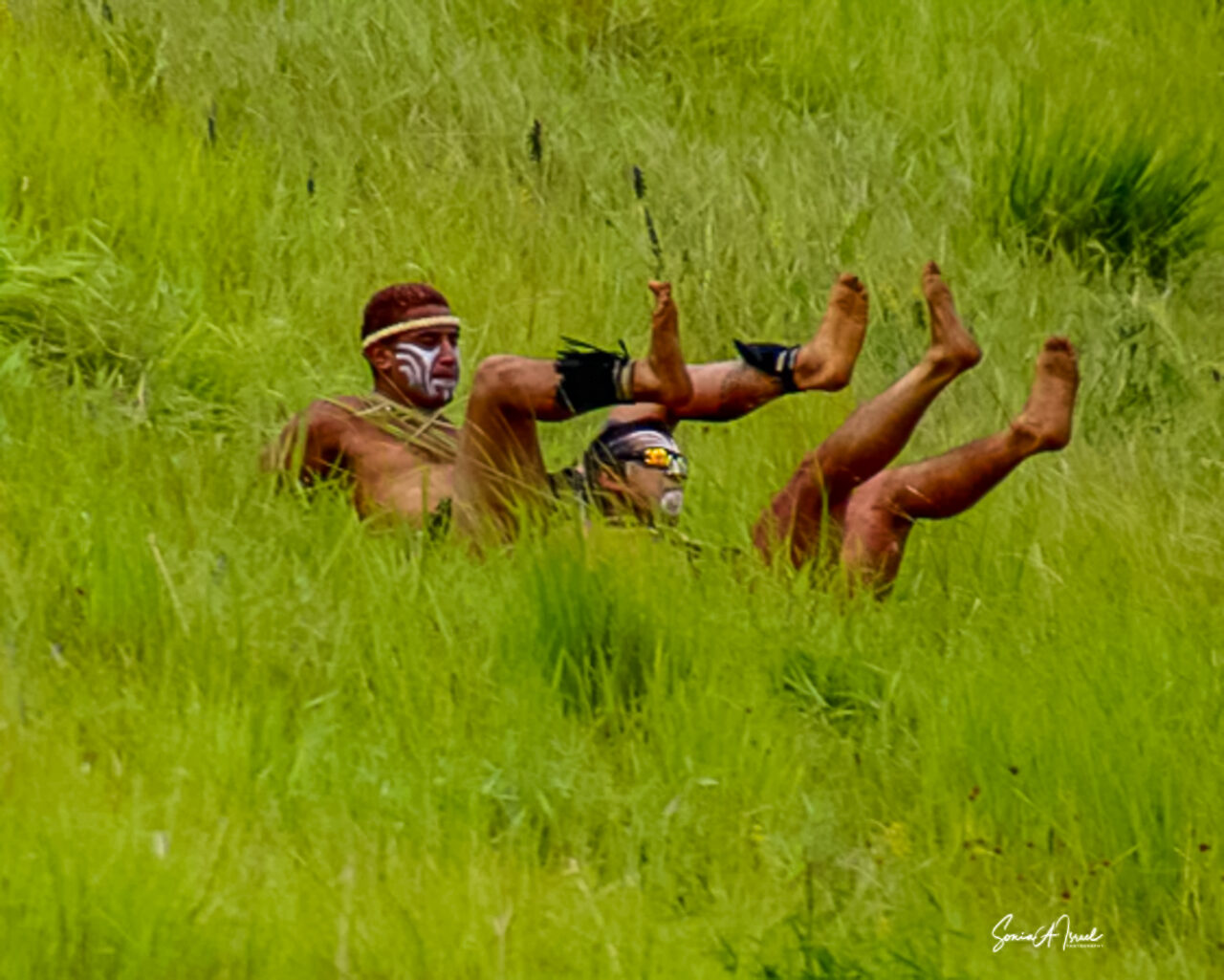






















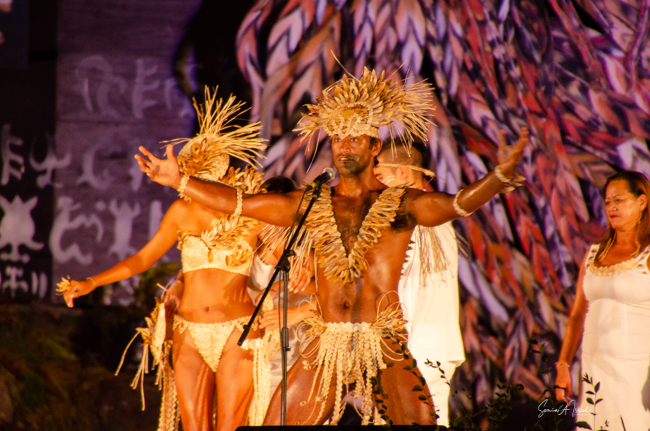








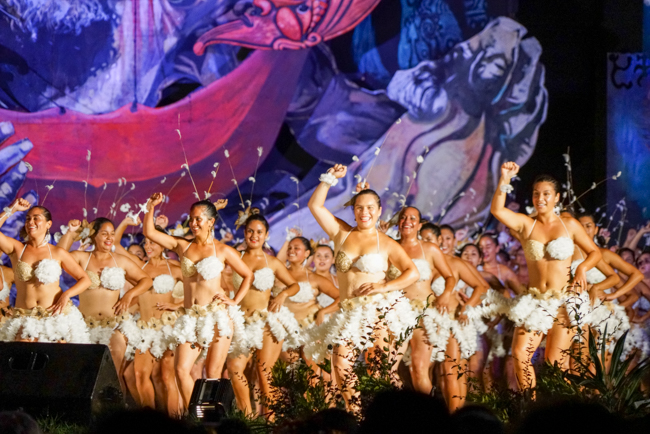




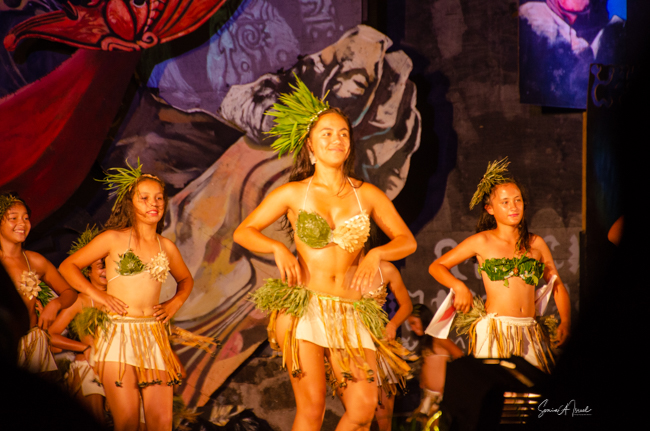








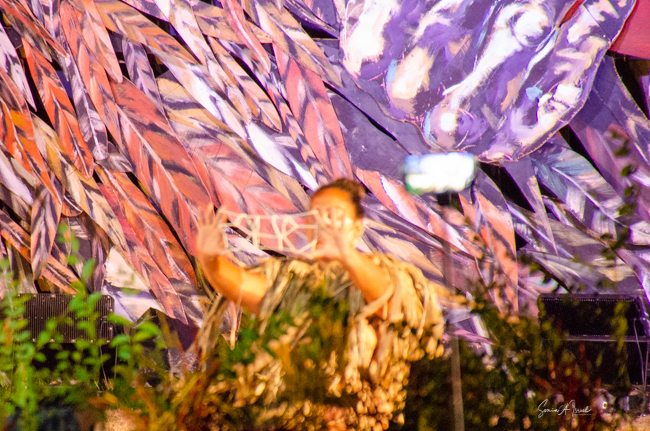


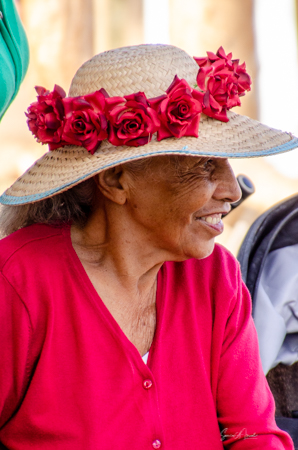













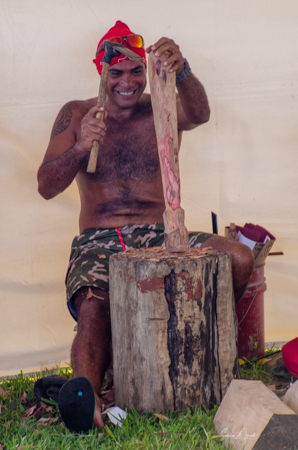






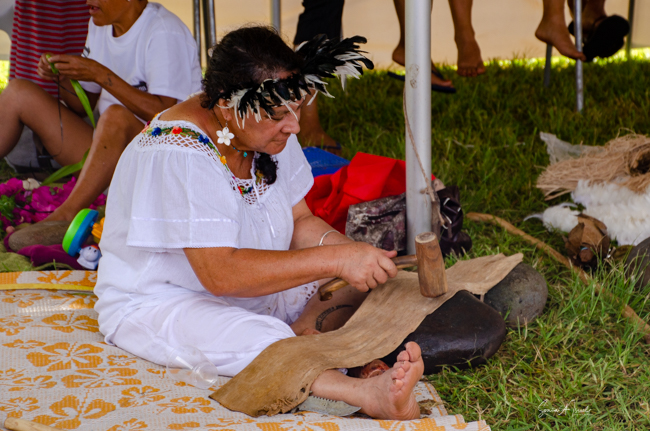

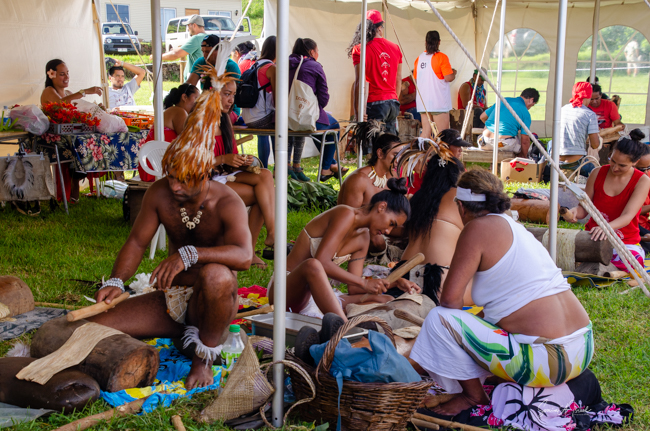

















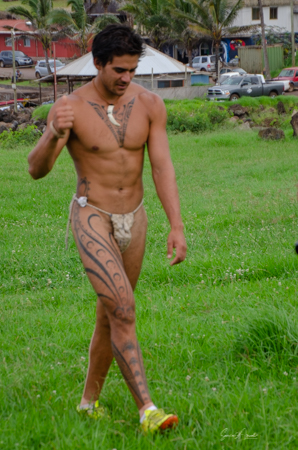
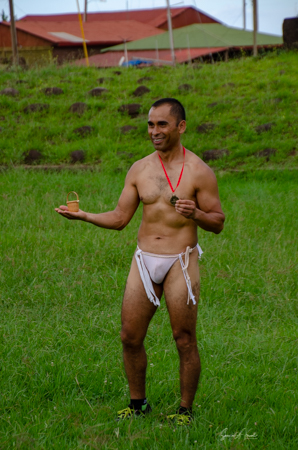







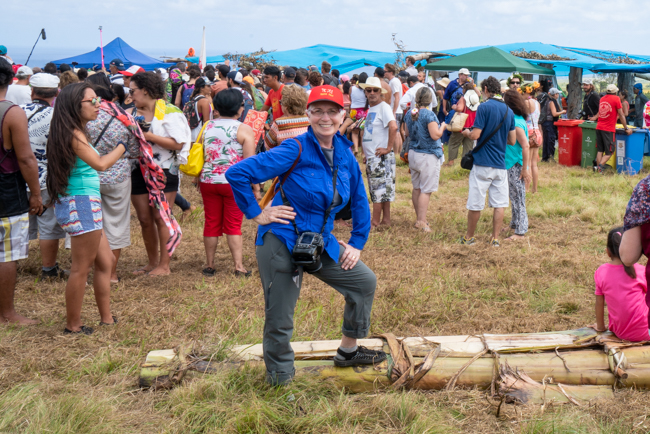
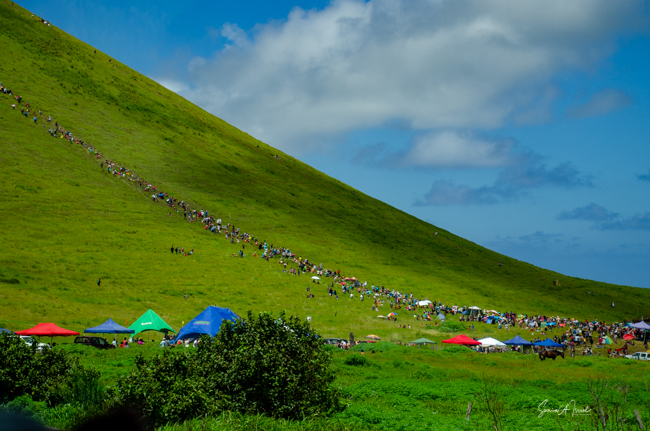












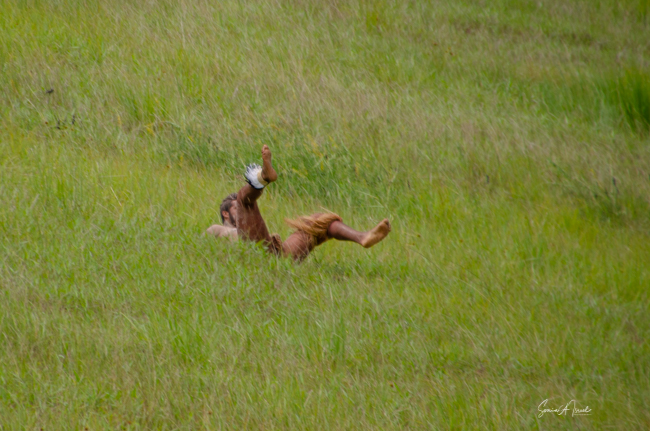

















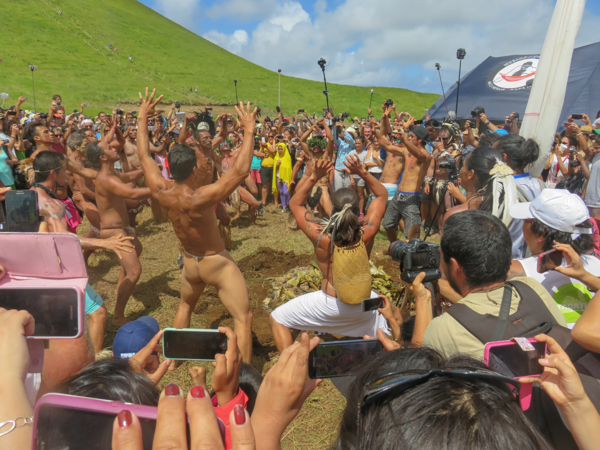






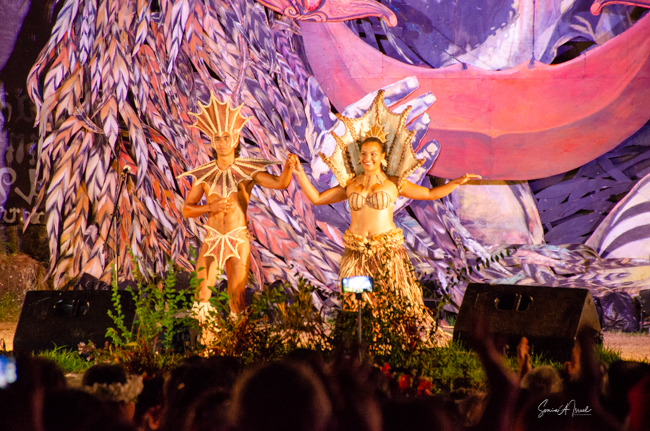
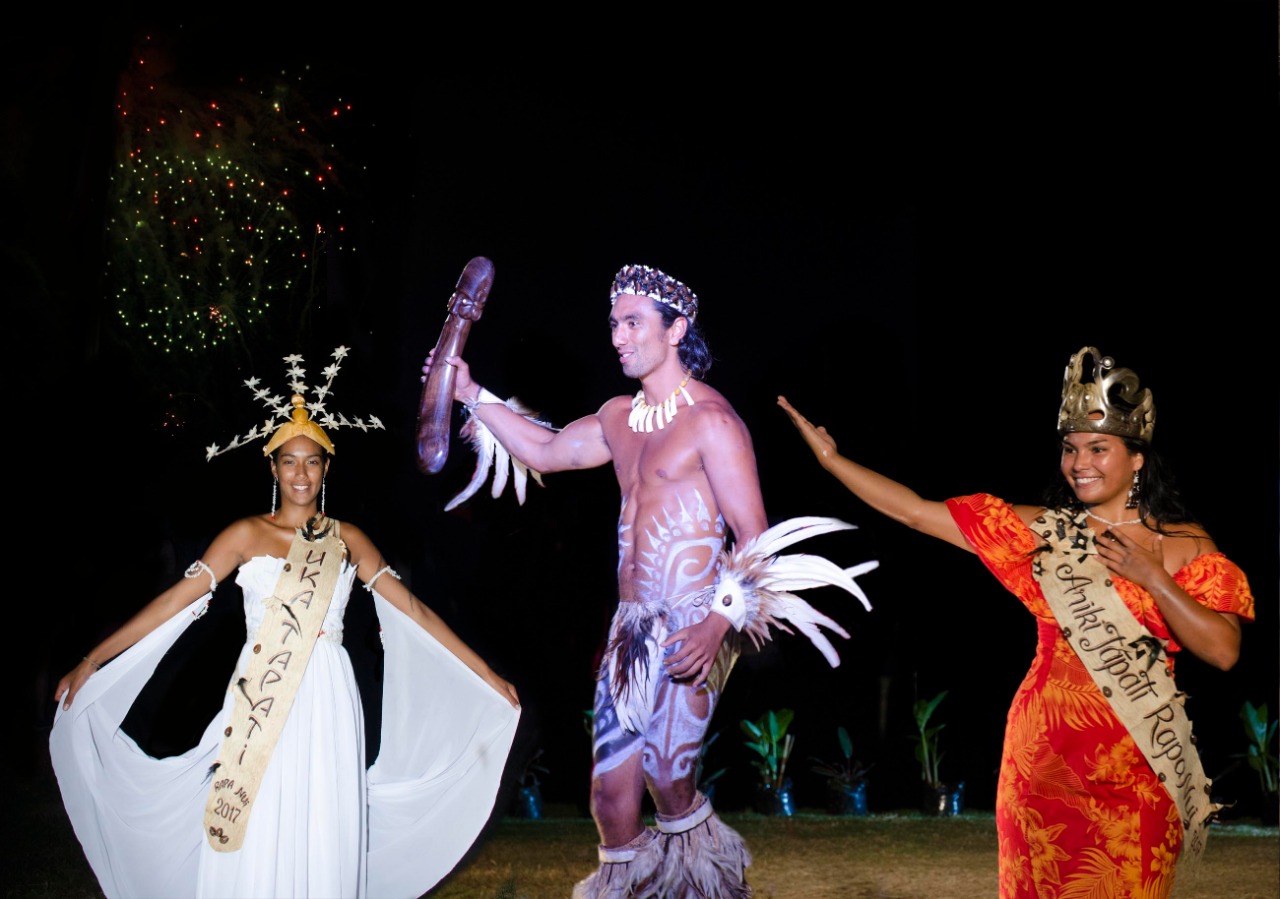
Stuart
Very entertaining reading
Gary
Thank you for the history of this little known island. Beautiful photos as always.
Doil Montgomery
Thanks for sharing your experience during this festival on Easter Island. I can see why they worshipped the human body. They all seemed to be healthy and in great shape.
Melissa
Sonia it was so fun to relive our adventure. What a wonderful memory that you captured in all its beauty.